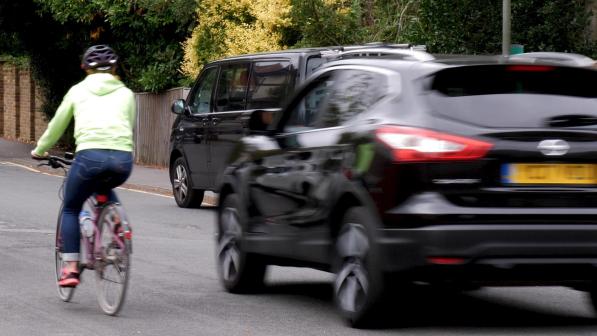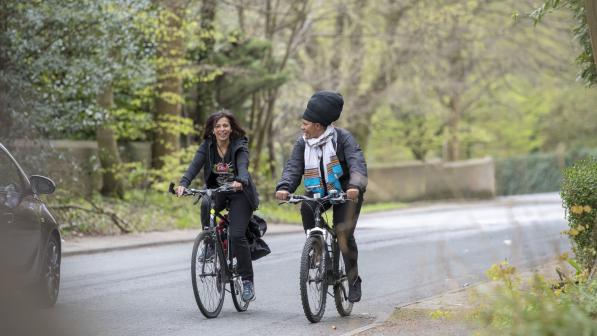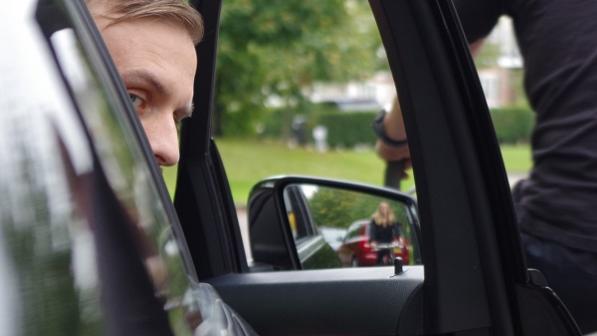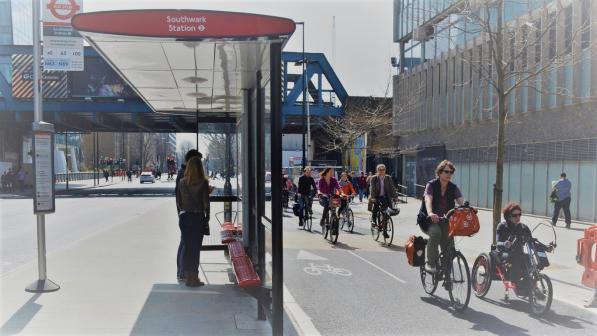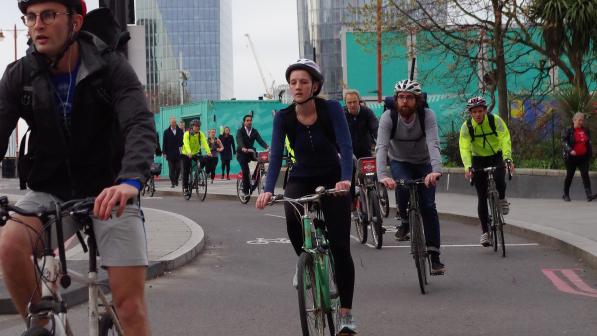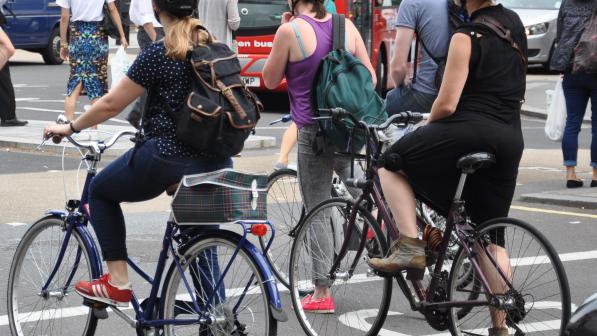Invest more in cycling, walking and safer streets: why wouldn’t you?

So, this is the seventh blog highlighting some of the issues Cycling UK has raised in response to the Government in Westminster’s Cycling and Walking Safety review.
That might seem like overkill, but there’s a reason why our campaigning has focused on this for several weeks, and why four of us have spent so long preparing almost 160 pages of evidence to submit to the Government later today: it’s the most important campaign we’ve run for a long time, and you’ve only got until midnight tomorrow (Friday 1 June) to take action and make your voice heard.
More, as well as safer cycling
Cycling UK’s policy director Roger Geffen wrote the first blog in this series back in April, outlining the principles that lie at the heart of this review, and how it was intended to complement the objectives set out in the Government’s Cycling and Walking Investment Strategy (CWIS).
That means aiming for ‘more’ as well as ‘safer’ cycling and walking, with the Roads Minister Jesse Norman stating in the foreword to the call for evidence document that the ambition in this review was “to make cycling the natural mode of transport even for a 12-year-old”.
We applaud that ambition, but the journey from aspiration to delivery is paved with good intentions, which is why we’ve set out 17 main recommendations and 63 supporting recommendations – our blueprint for more and safer cycling – in our full response.
Many of the solutions we’ve put forward are straightforward, and in the case of our proposed Highway Code changes, for example, cost little and don’t involve new legislation.
We’ve also outlined an array of simple steps the Government could take, and measures they could implement in separate blogs on reviewing road traffic offences and penalties, enforcement of road traffic laws, lorry safety and cycle-friendly design standards.
But there’s an elephant in the room: funding.
Rebalancing transport spending
We don’t have any problems with the six questions set out in the Government’s consultation, but we’ve had to add an additional section to our response which we’ve generically referred to as ‘safe systems management’.
This includes recommendations on matters including: road casualty target setting; resourcing the CWIS; the need for a road collision investigations body; improved access to justice for victims, and more transparency and accountability; and ‘presumed liability’.
All of these are important, but it’s resourcing – the money – which is crucial to delivering the joined-up safe networks that would encourage the less experienced and less confident to embrace cycling as a natural means of transport for short journeys.
On funding, our headline recommendation is the need to rebalance transport spending, making a far greater proportion available for cycling, walking and safer streets, including road and path maintenance
CWIS and short-term commitments
When the CWIS was published in 2017, it identified £1.2bn of funding over five years (2016-17 to 2020-21) that “may” be spent on cycling and walking.
Only £314m of this, however, was specifically earmarked by central government for investment in cycling and walking. The rest was expected to be allocated by local authorities (albeit from general funding streams such as the Local Transport Plan and the Local Growth Funds, which stem initially from central government).
This £314m comprised four funding lines, only two of which were due to last for the full five-year duration of the CWIS:
- £99m to continue the Cycling Cities Ambition Grant programme in eight English cities to 2018-19
- £50m to continue Bikeability cycle training through to 2019-20
- £85m for Highways England to deliver walking and cycling improvements along or across its network of trunk roads and motorways
- £80m for an Access Fund to promote sustainable travel
With almost half of the above funding being short-term commitments, the Government’s own annual investment in cycling and walking was therefore set to decline markedly over these five years: from £95m in 2016-17 (amounting to £2.07 per person annually outside London) to just £33m in 2020-21 (just 72p per person).
This 65% reduction was in marked contrast to the £15.2bn allocated for capital spending on England’s motorways and trunk roads (the Strategic Road Network, SRN), via the Government’s first Roads Investment Strategy (RIS1).
Over the same five-year period, the annual allocations for RIS1 were set to increase from £1.83bn (or £40 per person outside London) in 2016-17, to £3.86bn (or £84 per person outside London) in 2020-21.
Ignoring the benefit-to-cost ratio
These contrary trends in funding ignore the evidence that investment in cycling and walking is recognised by the DfT as having a “very good” average cost-to-benefit ratio.
It also helps tackle all of the major costs of urban transport identified in a 2009 Cabinet Office review of the costs of transport in English towns. It found that the costs of urban congestion, air pollution, physical inactivity and road casualties are all of a similar order of magnitude – each having economic costs of around £10bn in 2009 prices.
Investing in cycling and walking can help address all these problems, as well as climate change, noise and other more localised adverse impacts of motor traffic, without presenting any significant downsides.
By contrast, motorway and trunk road investment might reduce congestion for inter-urban traffic at bottleneck locations where investment is made, but is also likely to generate increased traffic overall, thereby potentially exacerbating congestion, pollution and other adverse impacts elsewhere.
These more remote adverse impacts are not well understood and rarely monitored. A review of the Government’s Post Opening Performance Evaluation (POPE) reports on motorway and trunk road schemes found that road schemes:
- Generate more traffic – often far above background trends over the longer term
- Lead to permanent and significant environmental and landscape damage
- Show little evidence of economic benefit to local economies
- Cause widespread damage to biodiversity and worse than expected increases in greenhouse gas emissions, as well as encouraging car-dependent housing and retail development
Cycling UK believes if the Government genuinely wishes to see walking and cycling become the norm for short journeys, and to reduce the external costs of road traffic and motor vehicle dependence, it needs to significantly shift the balance of transport funding, from inter-urban roads towards more local transport solutions that encourage active travel.
National funding: how much for cycling and walking?
The 2013 parliamentary Get Britain Cycling (GBC) report, written by the All Party Parliamentary Cycling Group (APPCG), called for measures to increase cycling from its current rate of 2% of all trips to 10% by 2025, and to 25% of trips by 2050. To achieve this, it recommended investing at least £10 per person annually on cycling, rising over time to £20.
The Government’s more modest target, initially proposed in its draft Cycling Delivery Plan (CDP) and incorporated into the CWIS, is to double cycling trips by 2025.
To find out how much these two targets would each generate, Cycling UK commissioned research from Leeds University (2015). This calculated that, in today’s money:
- Meeting the CDP target would generate annual benefits worth £6.4bn in 2050, and ‘discounted’ cumulative benefits of £46.4bn
- Meeting the GBC’s targets would generate annual benefits worth £42bn in 2050, and a total cumulative benefit between 2015 and 2050 of almost £¼ trillion (£248bn).
Sustrans later estimated (in 2016) that achieving the Government’s target to double cycle use over 10 years would require investment of £8bn over that period.
Yet the value of these estimates of required spending are gradually declining in real terms, due to inflation. Moreover, they only covered cycling, as they pre-dated calls for (and the adoption of) the CWIS.
Given this, Cycling UK is urging the Government to raise cycling and walking investment to at least 5% of transport spending by 2021 (when its second Roads Investment Strategy is due to start, and when we believe a new CWIS also needs to commence), rising to 10% over the next five years.
An investment strategy needs investment to transform aspiration to reality.
How you can help
We’ve already sent our executive summary report to the Government, containing all of our headline recommendations, including on funding, and our full response will be issued later today.
However, we need as many people as possible to support what we’re calling for to make the Government listen, and then just do it.
Some 8,500 people have done so already, and you can join them by going to our Cycle safety: make it simple campaign to take action, sending an email to the Department for Transport adding your voice to our recommendations.
But you’ve only got until tomorrow at midnight (Friday 1 June), after which the consultation closes.
If you’ve already given your support to this campaign, we’d implore you to do just one more thing – send someone you know an editable e-card telling them about this campaign. We’ve made it really simple for you to do this, and you can send the e-card to up to 10 people.
If everyone who’s supported this campaign managed to nudge one more person to respond, our voice would be that much louder – and why wouldn’t you want that?
